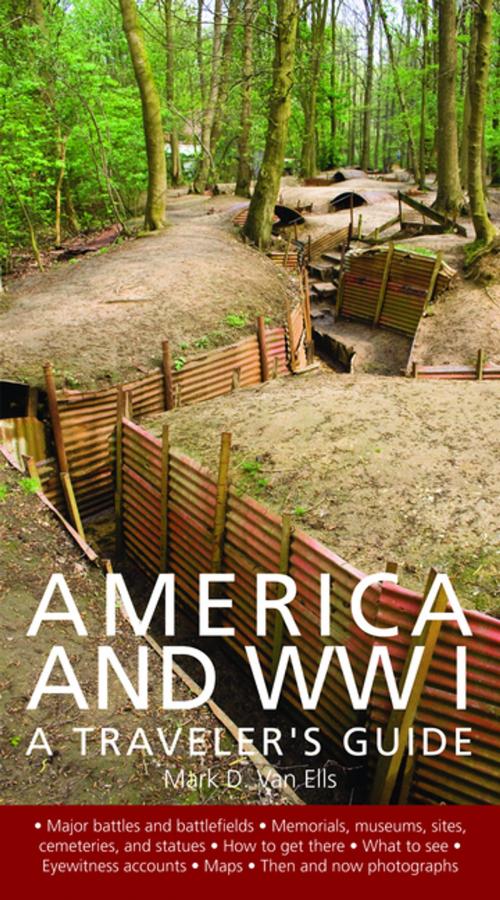| Author: | Mark D. Van Ells | ISBN: | 9781623710675 |
| Publisher: | Interlink Publishing | Publication: | March 6, 2015 |
| Imprint: | Interlink Books | Language: | English |
| Author: | Mark D. Van Ells |
| ISBN: | 9781623710675 |
| Publisher: | Interlink Publishing |
| Publication: | March 6, 2015 |
| Imprint: | Interlink Books |
| Language: | English |
It has now been a century since World War I began, but America’s role in this colossal struggle has been largely forgotten on both sides of the Atlantic. Historian and travel writer Mark D. Van Ells aims to change that. America and World War I follows in the footsteps of the Doughboy-as the U.S. soldier of the Great War was known-from the training camps of the United States to the frontlines of Europe. Tracing the totality of America’s experience from the factors that led the nation to enter the war in April 1917 to the armistice in November 1918, his riveting narrative describes a military buildup on a scale the world had never seen, as well as the war’s major battles and campaigns¾and, throughout, it leads the traveler to the memorials erected in the Doughboys’ wake, as well as to the many places that remain unmarked and uncommemorated.
Through their own words, we learn the feelings of those young men and women who served in the war. What were their private thoughts and fears? Their personal memories? Such eyewitness accounts, woven into the fabric of each chapter, give this absorbingly written book an immediacy and vividness that marks a new departure in guidebooks.
Includes:
Major battles and battlefields
Memorials, museums, sites, cemeteries, and statues
How to get there
What to see
Eyewitness accounts
Maps
Then and now photographs
Through their own words, we learn the feelings of those young men and women who served in the war. What were their private thoughts and fears? Their personal memories? Such eyewitness accounts, woven into the fabric of each chapter, give this absorbingly written book an immediacy and vividness that marks a new departure in guidebooks.
Includes:
Major battles and battlefields
Memorials, museums, sites, cemeteries, and statues
How to get there
What to see
Eyewitness accounts
Maps
Then and now photographs
It has now been a century since World War I began, but America’s role in this colossal struggle has been largely forgotten on both sides of the Atlantic. Historian and travel writer Mark D. Van Ells aims to change that. America and World War I follows in the footsteps of the Doughboy-as the U.S. soldier of the Great War was known-from the training camps of the United States to the frontlines of Europe. Tracing the totality of America’s experience from the factors that led the nation to enter the war in April 1917 to the armistice in November 1918, his riveting narrative describes a military buildup on a scale the world had never seen, as well as the war’s major battles and campaigns¾and, throughout, it leads the traveler to the memorials erected in the Doughboys’ wake, as well as to the many places that remain unmarked and uncommemorated.
Through their own words, we learn the feelings of those young men and women who served in the war. What were their private thoughts and fears? Their personal memories? Such eyewitness accounts, woven into the fabric of each chapter, give this absorbingly written book an immediacy and vividness that marks a new departure in guidebooks.
Includes:
Major battles and battlefields
Memorials, museums, sites, cemeteries, and statues
How to get there
What to see
Eyewitness accounts
Maps
Then and now photographs
Through their own words, we learn the feelings of those young men and women who served in the war. What were their private thoughts and fears? Their personal memories? Such eyewitness accounts, woven into the fabric of each chapter, give this absorbingly written book an immediacy and vividness that marks a new departure in guidebooks.
Includes:
Major battles and battlefields
Memorials, museums, sites, cemeteries, and statues
How to get there
What to see
Eyewitness accounts
Maps
Then and now photographs















